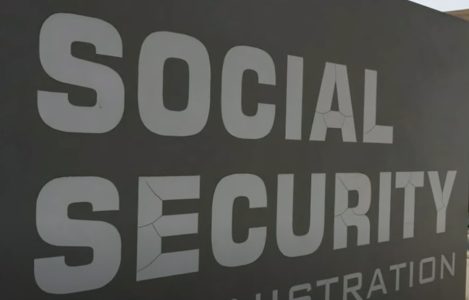Social Security garnishments are rising—Here’s how to protect your benefits
- Replies 0
If you’re like most Americans over 60, your Social Security check isn’t just a monthly deposit—it’s the lifeline that keeps the lights on, the fridge full, and the grandkids’ birthday cards stuffed with a little something extra.
So, when news breaks about aggressive Social Security garnishments, it’s enough to make anyone’s heart skip a beat. Here at The GrayVine, we believe in arming you with the facts, the context, and the practical steps you need to keep your hard-earned benefits safe.
Let’s break down what’s happening, why it matters, and—most importantly—what you can do to protect yourself.
What’s Going On With Social Security Garnishments?
In May, nearly 53 million retired workers received a Social Security check, and for the first time in history, the average monthly benefit exceeded $2,000. While this might seem modest, it's a vital financial lifeline for most older Americans.
For over two decades, Gallup has surveyed retirees annually about their dependence on Social Security. Year after year, 80% to 90% report that their monthly benefit is essential in some way to cover basic living costs.
What matters most to recipients is the predictability of their benefits and whether those checks keep pace with inflation each year.
However, due to a new policy implemented during President Donald Trump’s current term, more than 1 million Social Security beneficiaries are now facing reductions to their monthly payments—by as much as 50%. For those who heavily rely on this income, losing that much money isn’t an option.

The Trump Administration Targets Overpayments
Since taking office again, Trump has introduced major changes to the Social Security program. These include strengthened ID verification, an executive order to eliminate paper checks, and the formation of the Department of Government Efficiency (DOGE), which pushed the SSA to cut 7,000 jobs and close certain locations in a bid to lower costs.
But what’s capturing the most attention are the two garnishment policies that his administration has ramped up.
One of them, expected to restart "sometime this summer," is a 15% monthly garnishment targeting approximately 452,000 Social Security recipients who are behind on federal student loans. These loan payments were paused back in March 2020 at the onset of the pandemic.
From 2017 to 2023, the number of federal student loan borrowers aged 62 and up rose by 59%, totaling roughly 2.7 million, according to the Consumer Financial Protection Bureau.
Also read: What’s actually different in Social Security’s new rules—and how it might affect your retirement
But that 15% cut pales in comparison to a 50% garnishment rate now being applied to beneficiaries who received overpayments. The term "beneficiaries" refers broadly to retired workers, survivors of deceased workers, and those with disabilities.
Under President Joe Biden, the SSA had previously reduced clawbacks for overpayments to 10% per check—a major drop from the 100% garnishment seen under both President Obama and Trump’s first term.
Source: ABC News / Youtube.
According to Kilolo Kijakazi, then the acting SSA Commissioner, over 1 million beneficiaries were overpaid in fiscal 2022, and nearly 980,000 in fiscal 2023.
Since no updated data has been published, and with the garnishment rate having been lowered to 10% under Biden, it's reasonable to assume that more than 1 million people are still repaying their overpaid benefits.
Also read: Protect your retirement! Beware of these 6 Social Security scams on the rise in 2025
How Beneficiaries Can Avoid or Reduce Garnishment
Overpayments can result from a variety of issues—sometimes due to SSA miscalculations, and other times because recipients fail to report changes in income.
Take for example a worker with disabilities in 2025: if they earn more than $1,620/month without notifying SSA—say, $3,000/month—their tax filings will reveal ineligible benefits, triggering a clawback.
For the more than 1 million recipients who’ve received SSA letters about overpayment, there are options:
Read next: Worried about losing part of your Social Security? Here’s what the new overpayment rule means for your check

Have you ever had to deal with Social Security overpayments or garnishments? What was your experience like? Do you have questions about how to protect your benefits? Drop a comment below!
So, when news breaks about aggressive Social Security garnishments, it’s enough to make anyone’s heart skip a beat. Here at The GrayVine, we believe in arming you with the facts, the context, and the practical steps you need to keep your hard-earned benefits safe.
Let’s break down what’s happening, why it matters, and—most importantly—what you can do to protect yourself.
What’s Going On With Social Security Garnishments?
In May, nearly 53 million retired workers received a Social Security check, and for the first time in history, the average monthly benefit exceeded $2,000. While this might seem modest, it's a vital financial lifeline for most older Americans.
For over two decades, Gallup has surveyed retirees annually about their dependence on Social Security. Year after year, 80% to 90% report that their monthly benefit is essential in some way to cover basic living costs.
What matters most to recipients is the predictability of their benefits and whether those checks keep pace with inflation each year.
However, due to a new policy implemented during President Donald Trump’s current term, more than 1 million Social Security beneficiaries are now facing reductions to their monthly payments—by as much as 50%. For those who heavily rely on this income, losing that much money isn’t an option.

The Trump administration has implemented aggressive Social Security garnishments, with some beneficiaries facing up to 50% of their payments being withheld to recover overpayments. Image source: ABC News / Youtube.
The Trump Administration Targets Overpayments
Since taking office again, Trump has introduced major changes to the Social Security program. These include strengthened ID verification, an executive order to eliminate paper checks, and the formation of the Department of Government Efficiency (DOGE), which pushed the SSA to cut 7,000 jobs and close certain locations in a bid to lower costs.
But what’s capturing the most attention are the two garnishment policies that his administration has ramped up.
One of them, expected to restart "sometime this summer," is a 15% monthly garnishment targeting approximately 452,000 Social Security recipients who are behind on federal student loans. These loan payments were paused back in March 2020 at the onset of the pandemic.
From 2017 to 2023, the number of federal student loan borrowers aged 62 and up rose by 59%, totaling roughly 2.7 million, according to the Consumer Financial Protection Bureau.
Also read: What’s actually different in Social Security’s new rules—and how it might affect your retirement
But that 15% cut pales in comparison to a 50% garnishment rate now being applied to beneficiaries who received overpayments. The term "beneficiaries" refers broadly to retired workers, survivors of deceased workers, and those with disabilities.
Under President Joe Biden, the SSA had previously reduced clawbacks for overpayments to 10% per check—a major drop from the 100% garnishment seen under both President Obama and Trump’s first term.
Source: ABC News / Youtube.
According to Kilolo Kijakazi, then the acting SSA Commissioner, over 1 million beneficiaries were overpaid in fiscal 2022, and nearly 980,000 in fiscal 2023.
Since no updated data has been published, and with the garnishment rate having been lowered to 10% under Biden, it's reasonable to assume that more than 1 million people are still repaying their overpaid benefits.
Also read: Protect your retirement! Beware of these 6 Social Security scams on the rise in 2025
How Beneficiaries Can Avoid or Reduce Garnishment
Overpayments can result from a variety of issues—sometimes due to SSA miscalculations, and other times because recipients fail to report changes in income.
Take for example a worker with disabilities in 2025: if they earn more than $1,620/month without notifying SSA—say, $3,000/month—their tax filings will reveal ineligible benefits, triggering a clawback.
For the more than 1 million recipients who’ve received SSA letters about overpayment, there are options:
- Request an Overpayment Waiver
Beneficiaries can file Form SSA-632BK ("Request for Waiver of Overpayment Recovery"). If the overpayment wasn’t your fault and repaying it would cause financial hardship, SSA might waive the refund requirement. Supporting documents — like income and expense records — are generally needed.
- Appeal the Overpayment Decision
By submitting Form SSA-561 ("Request for Reconsideration"), recipients can challenge the SSA’s determination. Whether you're disputing the overpayment itself or simply the amount, a successful appeal means you owe nothing — or at least less.
- Negotiate a Lower Garnishment Rate
Acknowledging you were overpaid doesn’t mean you can afford to give up half your check. Filing Form SSA-634 ("Request for Change in Overpayment Recovery Rate") lets you propose a more manageable repayment schedule. While SSA aims to collect overpayments within 12 months, payment plans may extend up to five years.
Read next: Worried about losing part of your Social Security? Here’s what the new overpayment rule means for your check
Key Takeaways
- The Trump administration has implemented aggressive Social Security garnishments, with some beneficiaries facing up to 50% of their payments being withheld to recover overpayments.
- Over 1 million Social Security recipients have been notified of overpayments, which can result from both SSA errors and recipients not updating their income information.
- There are legal options available to avoid or reduce garnishments, such as applying for an overpayment waiver, lodging a request for reconsideration, or negotiating a more manageable repayment rate.
- Beneficiaries needing to contest or manage garnishments should be prepared to provide documentation of their income and expenses when submitting forms to the SSA.
Have you ever had to deal with Social Security overpayments or garnishments? What was your experience like? Do you have questions about how to protect your benefits? Drop a comment below!






